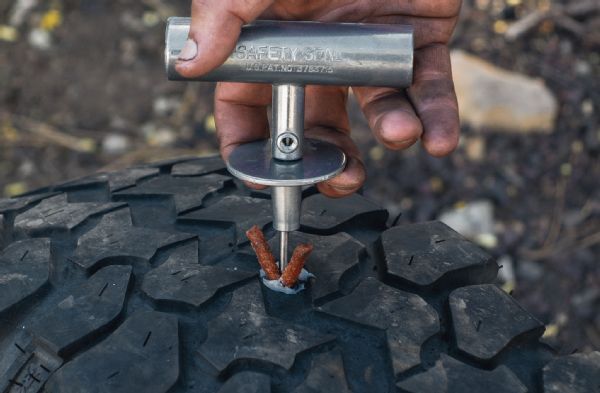A punctured tire while in traffic is an annoying thing. Each case will have different treatment methods. However, users choose the technique of plugging or patching that is the most popular because it helps to completely overcome the situation of a punctured tire quickly and saves money.
So, is plugging a tire safe? This measure is only a temporary fix, and it will not be safe on a long road. But, it’s possible for you to try to stay on the short one.
Scroll down, and learn more about this topic in the article below.
Is Plugging A Tire Safe?The tire plug method has been confirmed by experts to be effective.
The working principle is to use a specialized wire to seal the vent hole. The particular substances in the cord are solid, and they can automatically contract or expand very quickly, a way that helps to adapt to any shape of the hole.
However, this fix is not recommended by many people. Why?
Manufacturers only recommend using the plug cord as a temporary solution despite the miraculous effect before taking long-term repair measures. The reason comes from the objectivity of the items; they have shown that many potential dangers surround the problem.
Specifically, environmental influences such as air and moisture will penetrate the body to degrade and destroy the wheel structure, causing dangers.
Over time, by the state of corrosion that will weaken the steel wheel belt, the rubber tires bonded to increase impact. Another risk when repairing a puncture with a plug is damage to the inner wheel body. You can’t tell what damage is there with the naked eye.
But you absolutely should not confuse effectiveness with risk. It is pretty safe for you to use a plug to repair a punctured tire if you are moving the vehicle for a short distance. Consequences and risks are situations that occur in the future.
What To Do When You Have A Flat Tire?There are many definite causes of tire damage, including hitting sharp objects, worn tires. If you maintain the condition above the pressure, it may cause the tire to fail. If the vehicle cannot be repairable immediately, use the measures:
If you maintain the condition above the pressure, it may cause the tire to fail. If the vehicle cannot be repairable immediately, use the measures:
It will be pretty convenient if you have experience in the profession. The process is quite simple:
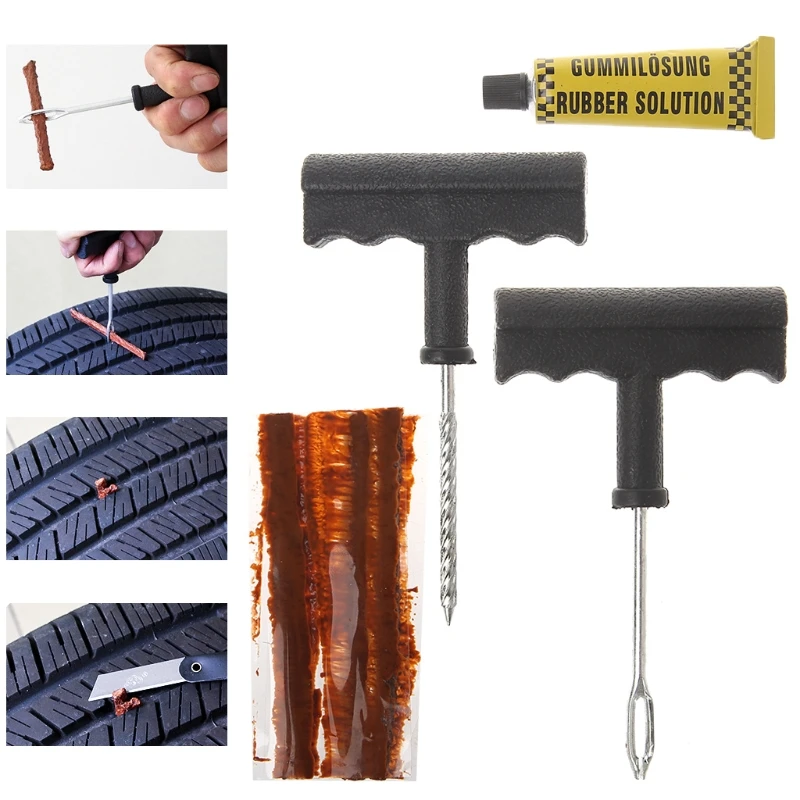 If liquid cement is available, spread a thin layer over the entire plug.
If liquid cement is available, spread a thin layer over the entire plug.For detailed guides, check out this video below:
It is a temporary solution. If you want to use it for a long time, regularly check the quality of the tires to control the condition the wheel is having.
Replace your tiresThe second way to repair a wheel is to get a new one. It is a great solution, ensuring the safest for you. Although the money you have to spend is quite expensive, it comes with a guarantee of the features of a wide tire, minimizing the risks you are facing.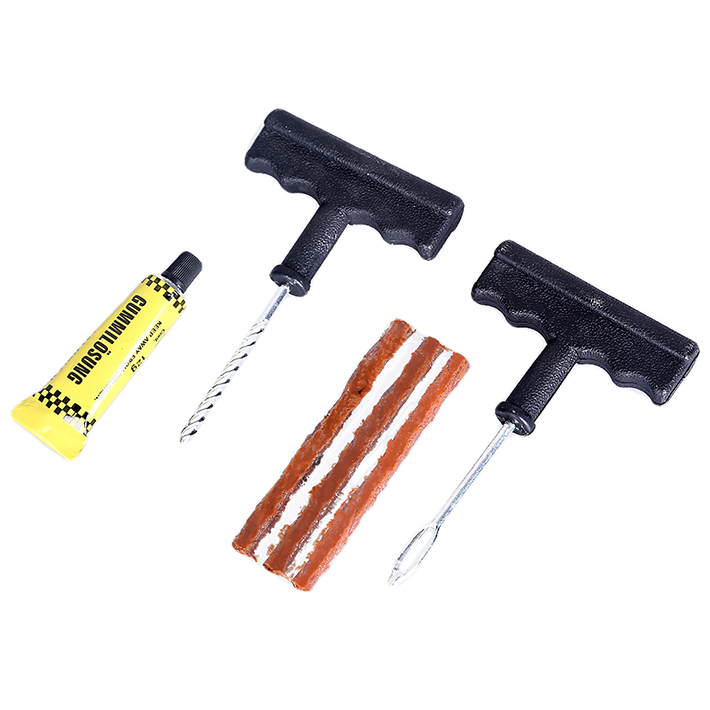
No, we’ve emphasized quite a few times that a plug is only a temporary solution before you can change the wheel or have a more permanent fix.
It would help if you understood that the vent plug is designed for temporary use only, as it tends to leak over time, releasing the air through the hole when traveling at high speeds.
Besides, the plug wire can be soaked in water, rusting and damaging the entire wheel structure.
When Should You Not Plug A Tire?The cases in which you should not plug the models are as follows:
Patches are often more effective than plugs, at least in timing.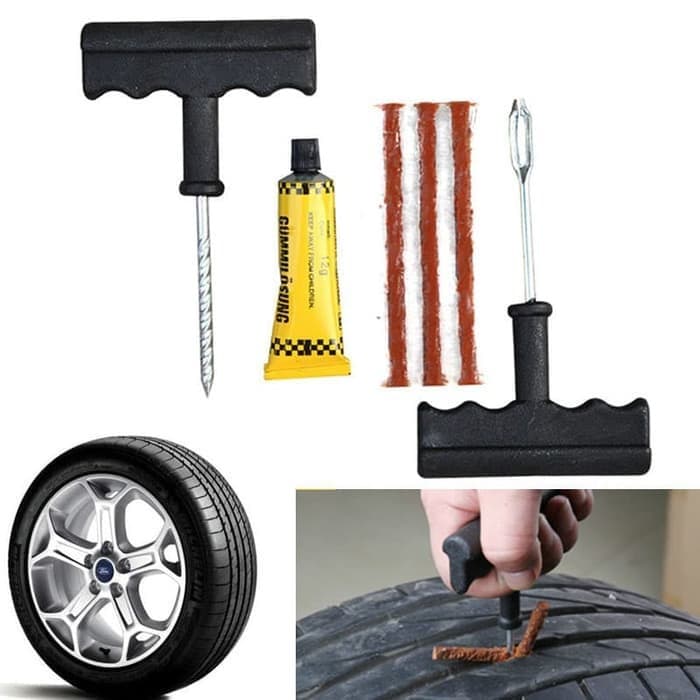
A plugged-in model is only safe to travel for 8 miles so that you can move the car farther, longer with the patch repair option.
Patches are usually less affected by the environment, so the life of a punctured one when patched can be up to 7-10 years with careful maintenance.
How Long Do You Wait After Plugging In The Model?You need to wait more than 5 minutes. When the adhesives are completely dry, the plug is firmly fixed at the mouth of the hole to ensure that water and moisture cannot penetrate so that you can drive with peace of mind.
ConclusionIn this article, we have presented the knowledge related to car repair with the tire plug method. We hope to help you when encountering this situation.
Thank you, and see you in our next update!
This post was last updated onTire plugging is the fastest method to repair a punctured car.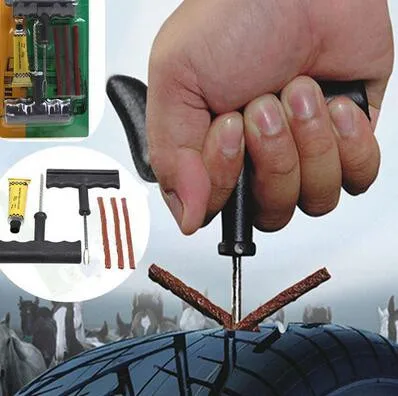 Tire plugging uses a cord to prevent the airhead from escaping. If you are an experienced person, you can avoid damage to your car with simple tips.
Tire plugging uses a cord to prevent the airhead from escaping. If you are an experienced person, you can avoid damage to your car with simple tips.
So, how long does a tire plug last? Most manufacturers say that plug versions can last 7-10 years if installed correctly.
Yet, this number is meant as a reference because you can’t always fix it perfectly. The article gathers useful knowledge and some of the most frequently asked questions about tire plugs. Let’s scroll down to read more information!
Buy Best Tire Repair Kits at Amazon.com
What Is A Tire Plug?It is the primary tool in the repair by plugging method. From the outside, it looks like a standard wire, and the structure is quite remarkable; it is a sticky object; depending on the case, the item can expand or contract to match the size of the hole.
Its working principle is also quite simple: after being inserted into the tire, the plug wire will sense the pressure, determine the shape of the wound, and then automatically expand to adapt.
In addition, the material that makes the wire must be guaranteed to meet the standards, confirming the certainty so that after the air is pumped in, there will be no problems.
There is no denying the convenience that the plug method brings, and you can even repair it without removing the tire from the rim. You can even plug in the tire in some exceptional cases, even when the wheels are connected.
How Long Does A Tire Plug Last?When a vehicle is repaired correctly and maintained, a plug’s life span can last up to 7-10 years. It is an unbelievable number for a wheel that has been repairable.
However, manufacturers advise users not to overdo patching like this in practice. When using too many repair measures, the impact will affect the inherent functions, causing deflation and explosion.
When traveling on the road, the car’s wheels have problems, do not rush to decide when the experience is not proficient; the best way is to take the car to a repair center to have expert advice on the appropriate repair method.
Buy Best Tire Repair Kits at Amazon.com
Plugging or patching is only a temporary measure before you have enough time to change into a new tire. The life of a tire after plugging can last from 7-10 years or 25,000 miles; no one can be sure that there will not be any problems.
Plugging in tires will be a good idea, even effective if the wheel is in an emergency that needs to be moved.
Is It Safe To Plug In A Tire?You can safely use your plugged-in tires when traveling in a specific section of the road. Unlike a spare tire, which has a short life, it is possible to prevent air from escaping through a previous puncture completely with a plug repair method.
Via many surveys, experts think there is a better measure than a plug – radial patch. It is a suitable method available on almost all popular tires on the market.
The process takes about 30 minutes while using a wire to insert the air hole takes up a few minutes.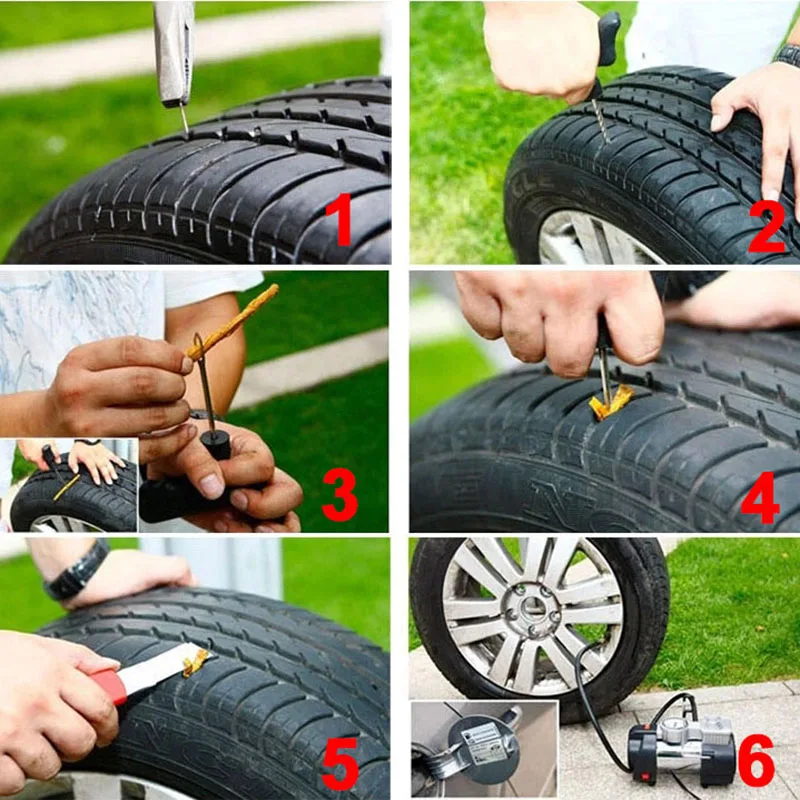 Both must be vulcanized to reinforce and increase the rubber surface’s certainty.
Both must be vulcanized to reinforce and increase the rubber surface’s certainty.
As long as the wound has adequately been reinforced, you are entirely safe traveling by car with tires. The safest time to use is not too long from when you repair using the above method.
Besides, some notes have also ensured stability when operating this type.
However, do not drive when there is a wound near the wall or on the side of the wheel; if the plug diameter exceeds ¼ inch, it is best to replace the tires.
Finally, the body’s weight, do not use plug tires to carry heavy objects; this inadvertently puts pressure on the wheels when the tires are weak.
How To Plug In A Tire?Here are some ways to help you better understand the plugging process.
Step 1: Locate the leak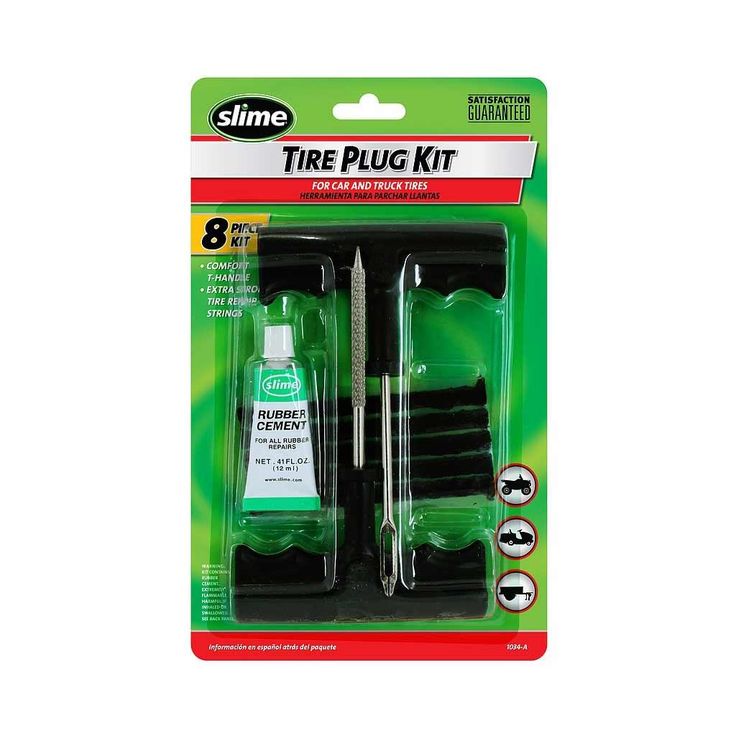
This step does not require you to remove the wheel altogether, but you can use a jack to support the wheel’s weight, so it is pretty easy to do the following steps.
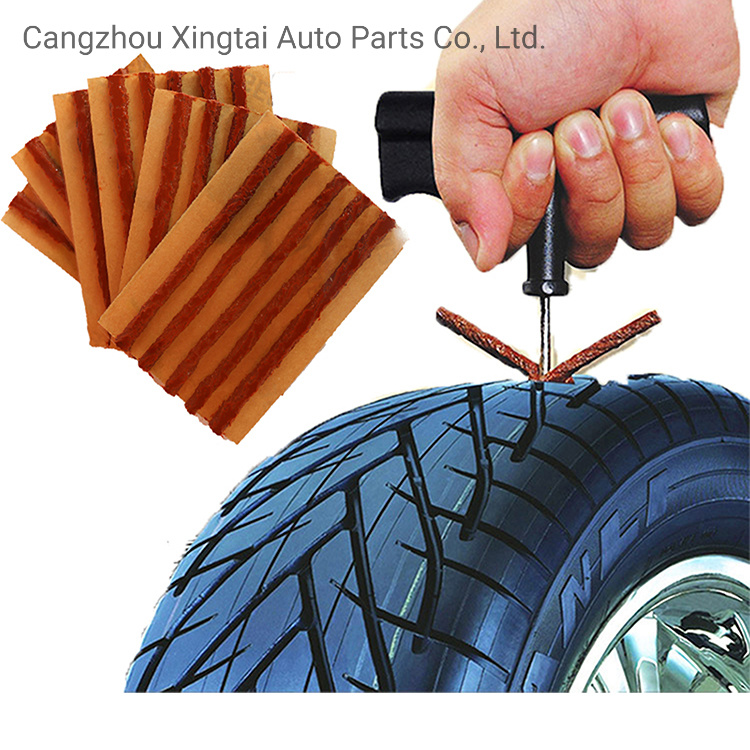
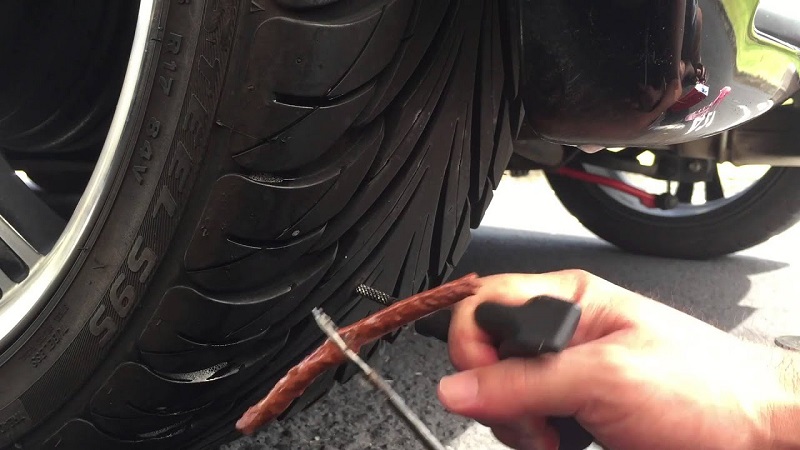
The above article has provided you with knowledge related to plugging or manipulations to perform this process. Hopefully, it will help you when you encounter a similar situation.
This post was last updated on image}}{{#icon}}{{{icon}}}{{/icon}}{{/image}}{{#description}}
{{{description}}}
{{/description}}
{{/hits}}
{{#showAllResults}}
Show all results
{{/showAllResults}} {{/total_hits}}
Russia
0003
Danmark
Deutschland
Global (English)
Italia
Nederland
North America (English)
North America (French)
Polska
Switzerland
Sverige
Osterreich
Belarus
Bulgaria
Kazakhstan
Ukraine 9expander. close}}-{{/expander.close}}
close}}-{{/expander.close}}
{{/children.length}}
{{/href}} {{#children.length}}{{text}}
Road traffic is a complex system of interaction between many drivers and cars. As a rule, it flows freely and quickly, but sometimes traffic jams and congestion occur along the way. Sometimes you even have to go down to fighting for space, not embarrassed to cut and squeeze other drivers. You overtake other drivers and get distracted. Are you in a hurry. You get tired. The decisive and most vulnerable driving factor is in the driver's seat - it's you. The safety systems that modern cars are equipped with can protect the driver from most dangers, but cannot correct all his mistakes. Tires are one of the most important safety factors. They are the four points of support, these are the palms of the hands of your car - the hands in which you entrust your life.
Tires are one of the most important safety factors. They are the four points of support, these are the palms of the hands of your car - the hands in which you entrust your life.
Tire search
From a road safety point of view, the vehicle must be equipped with tires with the correct tread depth and characteristics for the prevailing weather conditions. If there is a lot of water on the road, then when a certain speed limit is exceeded, the tread stops pushing water out from under the tire. The contact of the tire with the road will be lost, as a result of which the grip will also disappear.
Read more
Flat Run Technology (FRT, Flat Run Technology) from Nokian Tires is a special tire construction that allows the car to keep moving even when the tires are not inflated. Some car manufacturers use only FRT tires on their products to ensure that vehicles are safely delivered to dealerships even if the tires may be damaged.
Some car manufacturers use only FRT tires on their products to ensure that vehicles are safely delivered to dealerships even if the tires may be damaged.
Read more
All steering, braking and accelerating forces between the car and the road pass through the tires. Tires are the most active safety feature in a car: four palm-sized contact areas keep the car on the road and help you steer it.
Read more
Movement is the movement of people, goods and information from one place to another. It's an open playing field, a constantly evolving puzzle that never leaves you alone.
Read more
When choosing between studded and friction tires, you should first of all be guided by your needs. Both types of tires are wear resistant and have excellent performance. After learning more about the differences between them, you can choose the type of tire that suits you best.
Both types of tires are wear resistant and have excellent performance. After learning more about the differences between them, you can choose the type of tire that suits you best.
Read more
Vladimir Gavrilov
Estimated reading time: 4 minutes
2873
Category: Auto Maintenance
Each tire has its own life span. Usually, drivers try to change tires after the tread is worn out. On average, this happens after 4-5 years. However, not all cars are used so intensively, and some tires remain with deep grooves and lugs even after 5-7 years of operation. How long is it allowed to ride on such tires and what can happen to them on the way?
Tire rubber degrades over time, regardless of mileage. It is exposed to solar radiation, impacts from bumps, reacts with anti-icing reagents, tons poured onto the roads. The elasticity of rubber drops, cracks form, which become pockets of increased wear. Chemicals penetrate into them, which contribute to even greater damage to the already inner layers of the tire. Water and chemicals reach the cords, which first get wet, and then rot and break.
It is exposed to solar radiation, impacts from bumps, reacts with anti-icing reagents, tons poured onto the roads. The elasticity of rubber drops, cracks form, which become pockets of increased wear. Chemicals penetrate into them, which contribute to even greater damage to the already inner layers of the tire. Water and chemicals reach the cords, which first get wet, and then rot and break.
It usually takes 5-7 seasons until the tire reaches extreme wear. Then the problems begin. A weathered coating cannot resist small sharp objects that show up from under the snow on the roads in spring. A small run over a piece of glass or a bent nail will result in punctures or cuts. The new tire resists them much better.
It's even worse when an old "hardened" wheel gets into a hole with sharp edges. Even with a small impact, the tire risks internal damage. The threads of the old cord are torn, the protective layer is crushed, and air seeps through the cracks in the rubber. A hernia does not form, but a long zone of damage appears, allowing air to pass in several places at once.
It is useless to patch, but small holes can be repaired with flagella. Though they won't last long. Many air-permeable cracks are a direct reason for urgent tire replacement.
Typically, tire manufacturers define the life of their products as 5-6 years. Michelin claims a 10-year warranty, Nokian does too. And the beginning of the service is not the date of sale, but the date of manufacture. Sometimes more than six months pass between these two events.
If a tire has been in storage for a whole year, it is still considered that its characteristics are no longer the same as those of a new one.
You can find out the age of the tire by the markings stamped on the sidewalls. You can find a designation like "YYY2018". Here, the last 4 digits tell the customer that the product left the assembly line in the 20th week of 2018.
Since 2019, a new production control system has been introduced using DataMatrix codes. Using them, you can see when the goods were imported or produced, determine the country of origin, etc.
Using them, you can see when the goods were imported or produced, determine the country of origin, etc.
Requirements for the operation of winter tires are contained in the Technical Regulations of the Customs Union, as well as in the annex to the SDA entitled "On the admission of vehicles for operation and the obligations of officials to ensure road safety." Section 5.1 provides detailed requirements for the condition of tires.
The average groove depth of a new summer tire should be 8 mm. In winter, it is slightly larger and exceeds 10-12 mm.
The remaining tread depth of winter tires designed for use on icy or snowy road surfaces, marked with the letters M+S, M&S, M S must be at least 4 mm. This marking also indicates the passenger type of wheels.
The minimum tread depth of summer tires for different categories of vehicles must be:
